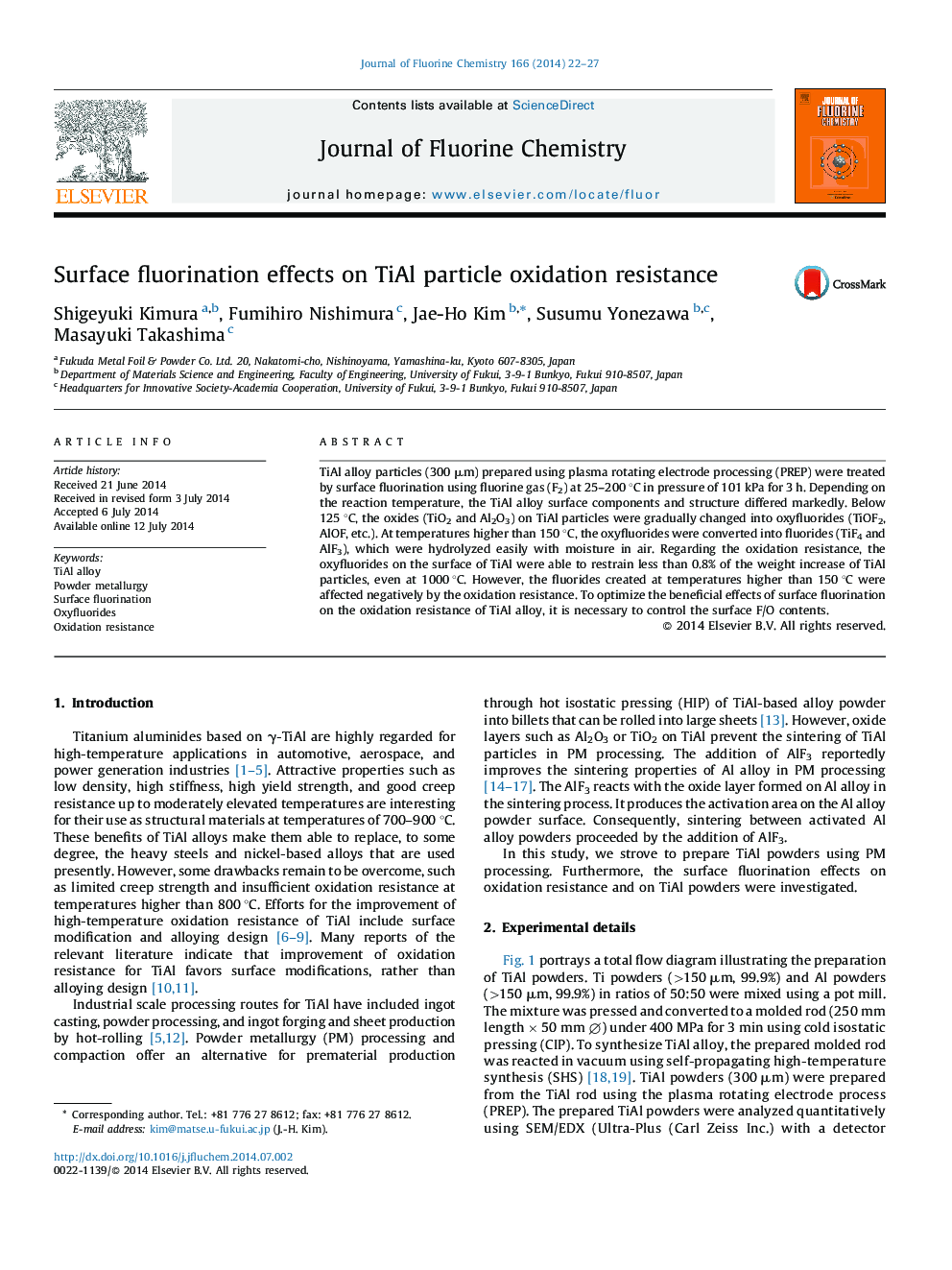| Article ID | Journal | Published Year | Pages | File Type |
|---|---|---|---|---|
| 1314233 | Journal of Fluorine Chemistry | 2014 | 6 Pages |
•Surface fluorination of TiAl alloy particles was conducted at 25–200 °C with F2 gas.•Below 125 °C, an oxyfluoride layer on TiAl particles was made from the oxide layer.•At more than 150 °C, the fluoride layer on TiAl was made from the oxyfluoride layer.•Fluorinated TiAl oxidation resistance can be 10 times that of untreated material.
TiAl alloy particles (300 μm) prepared using plasma rotating electrode processing (PREP) were treated by surface fluorination using fluorine gas (F2) at 25–200 °C in pressure of 101 kPa for 3 h. Depending on the reaction temperature, the TiAl alloy surface components and structure differed markedly. Below 125 °C, the oxides (TiO2 and Al2O3) on TiAl particles were gradually changed into oxyfluorides (TiOF2, AlOF, etc.). At temperatures higher than 150 °C, the oxyfluorides were converted into fluorides (TiF4 and AlF3), which were hydrolyzed easily with moisture in air. Regarding the oxidation resistance, the oxyfluorides on the surface of TiAl were able to restrain less than 0.8% of the weight increase of TiAl particles, even at 1000 °C. However, the fluorides created at temperatures higher than 150 °C were affected negatively by the oxidation resistance. To optimize the beneficial effects of surface fluorination on the oxidation resistance of TiAl alloy, it is necessary to control the surface F/O contents.
Graphical abstractFigure optionsDownload full-size imageDownload as PowerPoint slide
